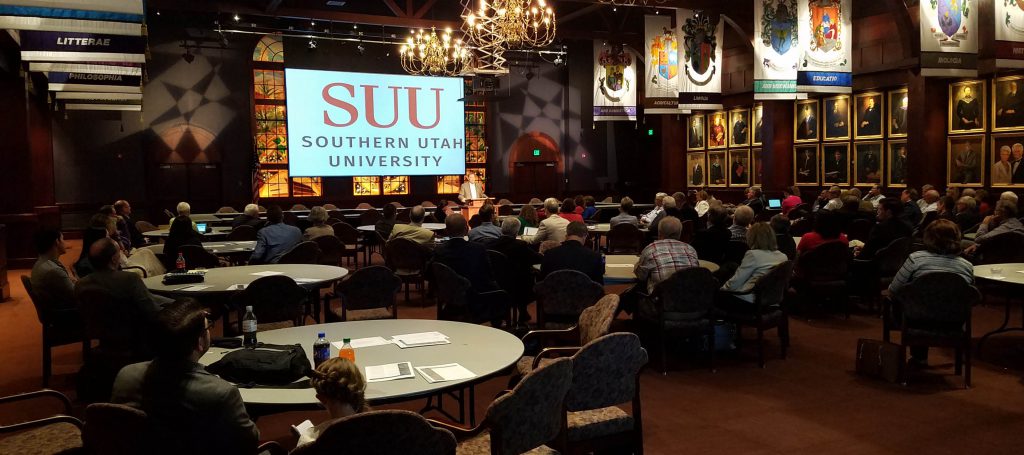2018 Legislative Update – Week 1
The 45-day 2018 Legislative Session commenced on Monday, January 22, 2018. With over 1,200 legislative bills filled, several are expected to impact Utah’s public colleges and universities. The early weeks of the session focus on the budget and capital development priorities; however, several pieces of legislation are up for consideration. 2018-19 Budget According to the […]
The ROI of Utah’s College Graduates
For every tax dollar the state invests in higher education, there is a 3 dollar increase in tax revenues to the state. Further, a Utahn who invests a year’s worth of tuition in a college education will realize at least a 41% wage increase in the first year working after college.
2018 – the Year of Technical Education
Governor Herbert recently announced 2018 as the Year of Technical Education. This announcement came on the heels of the Governor’s announcement of a new IT Education Pathway in Utah. Under Governor Herbert’s ‘Talent Ready Utah,’ initiative, leaders from the Governor’s Office, Utah’s State Board of Education, System of Higher Education, and System of Technical Colleges […]
4 takeaways on good jobs in Utah that don’t require a bachelor’s degree
A recent report released by the Georgetown University Center on Education and the Workforce and JP Morgan Chase & Co. showed that there are 30 million good jobs in the United States that pay well without a bachelor’s degree. “Good jobs” are defined as those that pay at least $35,000 per year for those under […]
Governor Herbert meets with regents, trustees and presidents

The Board of Regents, Boards of Trustees and presidents from all eight USHE institutions recently participated in a joint meeting of higher education leaders to discuss some of Utah’s most pressing higher education issues. This once-a-year coordinating meeting occurs in conjunction with the Regents’ regularly-scheduled July meeting. Governor Herbert also attended a portion of the […]
New report: 30M good jobs that pay without a BA (but many still require college)
Although the decline in the manufacturing economy eliminated many good jobs for high school graduates, new research from the Georgetown University Center on Education and the Workforce (Georgetown Center) finds that there are currently 30 million good jobs in the U.S. that pay well without a bachelor’s degree (B.A.). These good jobs have a median […]
How are tuition waivers used across USHE?

What are tuition waivers? Tuition waivers are a type of financial aid used to help students pay for college. Student aid—a critical part of keeping college affordable—comes in many forms, including federal grants and scholarships. From a student perspective, all student aid serves the same purpose: reducing the out-of-pocket amount a student must pay for […]
12 key takeaways from the NCES Condition of Education 2017 report

The National Center for Education Statistics recently published its annual report, The Condition of Education 2017, which showcases national trends in education using data from the 2014-15 academic year. Below are higher education highlights from the report: 1.) The more education earned, the higher the medial annual earnings. For young adults ages 25–34 who worked full […]
New reimbursement program encourages longevity in law enforcement careers
In an effort to encourage Utahns working in criminal justice to lengthen their careers, Senator Karen Mayne sponsored legislation during the 2017 Legislative Session to incentivize educational advancements in the criminal justice industry. The Peace Officer Career Advancement Reimbursement program provides up to half of tuition and fees (maximum of $5,000) per qualified student annually. […]
Report highlights gap in educational attainment in Utah’s workforce demands

A new report from Achieve, a bipartisan nonprofit organization focusing on helping states make college and career readiness a priority for all students, has released its latest analysis of states’ student performance against college-and career-ready (CCR) indicators. The report provides a state-by-state analysis of education outcomes in relation to the state’s employment needs. Supply vs. […]

